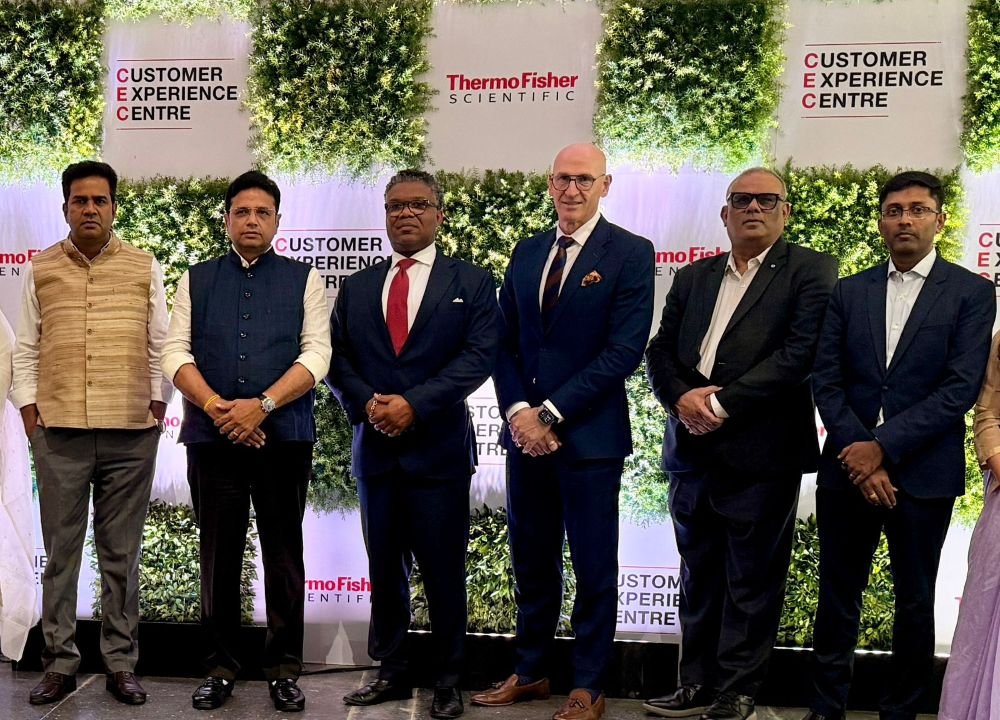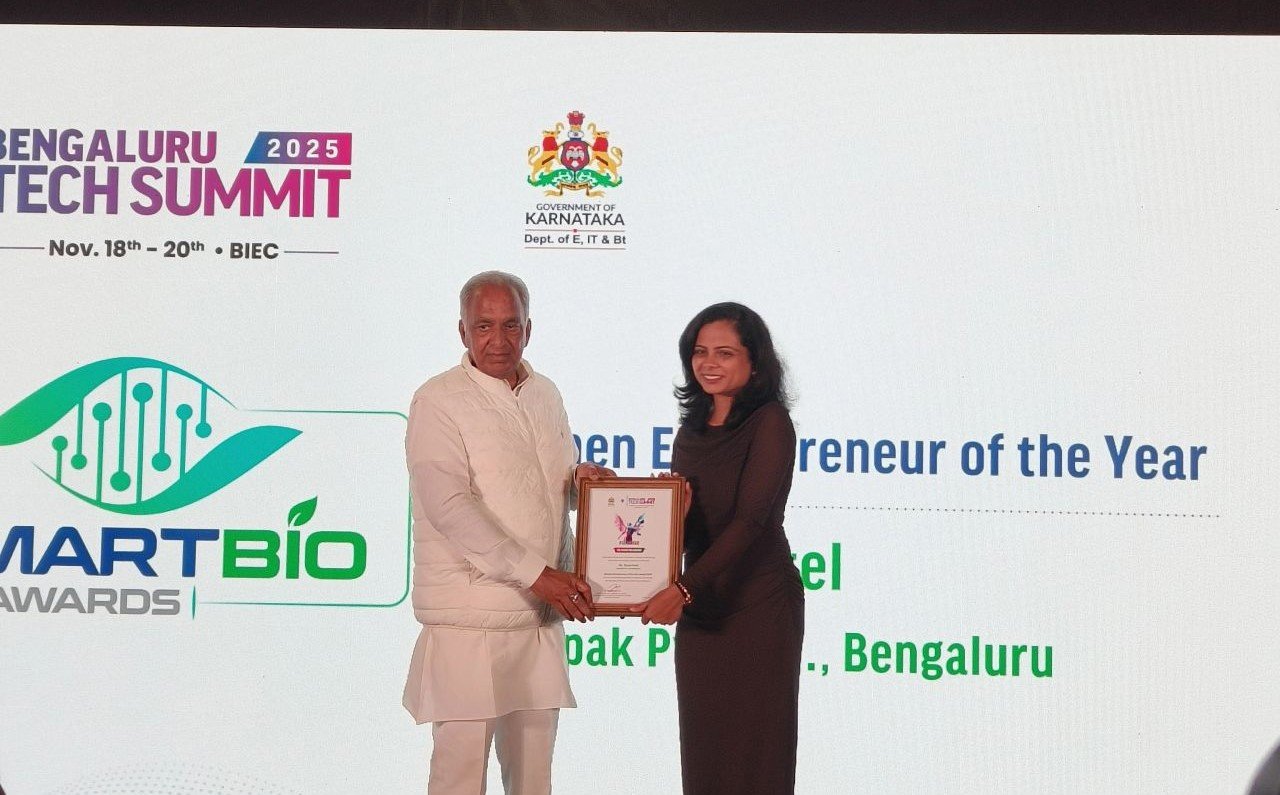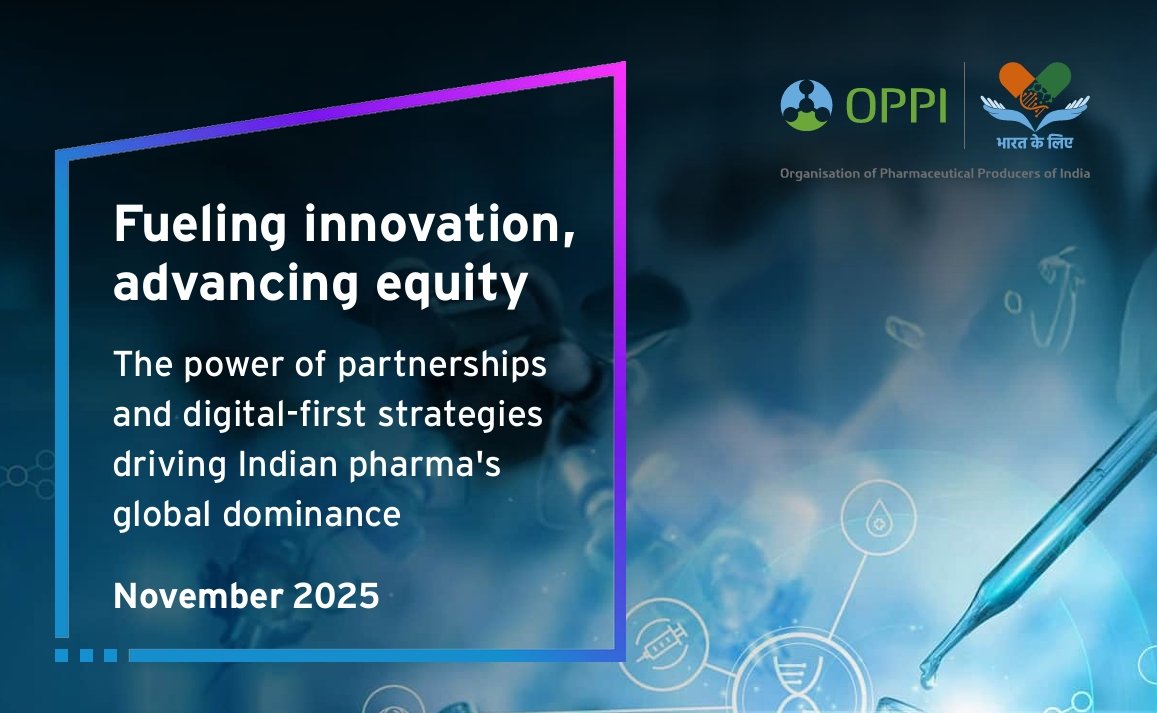Will India biotech hit $10 bn by 2015?
March 15, 2011 | Tuesday | News
BioSpectrum Explores
In September 2005, BioSpectrum, in its efforts to promote biotech
industry, organized the Biotech CEO Summit. It was the
first-of-its-kind platform in India that brought together stakeholders
from various domains of biotech industry with a clear agenda of
analyzing the ways and means of achieving a target of $5 billion by the
end of 2010.
The then Union Minister of State for Science and Technology and Ocean
Development, Mr Kapil Sibal, after inaugurating the summit, said that
the initiatives taken by the government at policy level and the
ministry's willingness to take the progress forward, would make the
dream of achieving the target of '$5 billion biotech industry by 2010',
a reality.
In early 2010, the industry veterans pointed that India's biotech
industry will clock $10 billion mark by 2015. Dr Kiran Mazumdar-Shaw, a
prominent person in Indian biotech industry, also pointed out that the
industry is predicted to reach $5 billion by 2011 and will register $10
billion by 2015. Many big pharma players are already developing
strategic alliances and collaborative research programs with Indian
partners and this trend is set to continue. And the industry leaders
are optimistic about growth in the coming years.
In 2009-10, the biotech industry witnessed a growth of 17 percent as
against previous year's growth rate of 18 percent. In 2008-09, the
industry witnessed a growth of 20 percent. In 2007-08, the industry
clocked a CAGR of over 30 percent for a period of five years.
Considering the market potential and opportunities, the biotech
industry will see a growth of over 20 percent in the coming years. In
2009-2010, the biopharma sector witnessed a growth of 12 percent,
bioagri has grown by 37 percent, bioservices sector has grown by 28
percent, and bioindustrial sector has grown by 18 percent.
In this eighth anniversary issue, BioSpectrum explores the possibility
of India achieving the $10 billion mark in the next four years by
analyzing the strengths, weaknesses, opportunities and threats of
Indian biopharma and bioservices sector.
(Compiled on the basis of industry inputs)
BioPharma: Strengths
India biopharma sector has a
growth-friendly ecosystem. The entrepreneurial spirit, skilled
manpower, world-class manufacturing facilities, willingness to take
risk, and growing opportunity in the areas of biosimilars and vaccines
drive the growth of the sector.
“India has a good ecosystem with growth prospects. Manufacturing
facilities catering to both clinical and commercial space are on a
rise. The government policies, especially in Andhra Pradesh and
Karnataka, give impetus to biotech R&D. In the US, it is very
difficult to penetrate the market. But, in India, we have a good
marketing opportunity. With proper clinical research, we can expect
more business opportunity. In the next five to 10 years, biotech will
bounce back to growth.�
- Dr DS Brar, chairman, GVK Biosciences
“In biologics space, India's strength has been in the development of
quality and cost-effective vaccines for a number of diseases. It is
anticipated that the evolving biotherapeutic segment will increase its
share as more quality biosimilar proteins and antibody therapeutics
enter the market. Our economic growth and the increasing presence of
medical insurance companies in India bring down the costs of the
expensive medicines and help in expanding the biopharmaceutical
market.�
- Dr Gopal Dasika, vice president-biotech, Unichem
“The strength and opportunity that drive the growth of the biopharma
industry are skilled manpower, world-class manufacturing facilities
with the highest number of FDA-approved manufacturing units outside the
US, and cost-effective technology leading to low operational costs.
With increasing number of mergers and acquisitions we are truly
becoming multinational and making our presence felt globally like never
before.�
“Support from government with initiatives like Biotechnology Industry
Partnership Program and Biotechnology Industry Research Assistance
Program; and agreement with Trade Related Intellectual Property Rights
give most needed boost to biopharma sector.�
- Dr Ajoy Kumar, CEO, Max Neeman International
“India has a whole line of good leaders but this should be backed by
financial investments. Contract Research and Manufacturing Services
(CRAMS), by far, has been a great boost for India. In the years to
come, biopharma will drive the growth of the industry. Companies such
as Advinus Therapeutics and GVK BIO have tremendous strengths in
developing new chemical entities.�
- Mr Sanjeev Saxena, CEO, Actis Biologics
“Government of India is eager to develop biotech sector and it is the
major source of funding for biotech research. India is good at making
biogenerics. Pharma companies such as, Dr Reddy's Laboratories,
Ranbaxy, Cipla, and Shantha Biotechnics are active players in
biogenerics market. Therapeutic monoclonal antibodies (mAbs) constitute
a major share of biologics revenue.�
- Dr Sujay Singh, CEO, Imgenex
“Entrepreneurial spirit of our people, willingness to take risk,
ecosystem involving industrial peers, availability of talented young
people, hunger for success and drive for innovation are some of the
strengths India has in biopharma sector.�
- Dr Rashmi Barbhaiya, CEO & MD, Advinus Therapeutics
“Lean cost of IPR generations, increasing government support for small
biotech businesses, potential foreign direct investment and clinical
trial market maturation will drive the growth forward.�
- Mr Pankaj Sharma, CEO, LeadInvent
BioPharma: Opportunities
“Patents for many of the top selling
therapeutic mAbs, such as, Herceptin (for the treatment of breast
cancer) and Humira (for the treatment of rheumatoid arthritis) will
expire in the next five to six years. By 2017, approximately $38
billion ( 171,202 crore) worth of biologic
drugs will lose patent protection. This will drive the growth of
biotech and pharma companies in India.�
171,202 crore) worth of biologic
drugs will lose patent protection. This will drive the growth of
biotech and pharma companies in India.�
- Dr Sujay Singh, CEO, Imgenex
“The biosimilar space offers a significant opportunity to Indian
biotech industry in the next decade. The global market for biosimilars
is estimated to reach $5-6 billion ( 22500-27,000 crore) in the next 10 years.
Indian companies can aim for sizeable share in this market. Even
domestic market opportunity for biosimilars is estimated to be $1
billion (
22500-27,000 crore) in the next 10 years.
Indian companies can aim for sizeable share in this market. Even
domestic market opportunity for biosimilars is estimated to be $1
billion ( 45,000 crore) by 2020.�
45,000 crore) by 2020.�
- Mr KV Subramaniam, president & CEO, Reliance Life Sciences
“If Indian biopharma companies focuses on relevant ideas, there are
tremendous opportunities. Diabetes is one such area that needs
attention and adequate work needs to be undertaken in this area. The
research institutes and the private companies must jointly address this
problem. The diagnostic tools, preventive tools, and therapeutic tools
market need to be strengthened.�
- Dr Jitendra Verma, MD, Life Care Innovations
“In addition to wide domestic market for bioproducts, India moves ahead
in value chain in drug discovery and more opportunities are created as
companies out-license their compound pipelines for multi-million dollar
deals.�
- Mr Pankaj Sharma, CEO, LeadInvent
BioPharma: Weaknesses
“India has advantages in terms of low-cost
for manufacturing and product development as compared to developed
countries. However, for being a truly-global leader in this space,
India needs to focus on strengthening regulatory approval process,
maintaining higher standards of biosimilars, developing human
competencies and accessing regulated markets.�
- Mr KV Subramaniam, president & CEO, Reliance Life
Sciences
“With few exceptions, India's biotech infrastructure is poor as
compared to the US and Europe. India still imports most of the
equipments and reagents used in biomedical research. There are no
strong collaborations between academia and industries. To support the
growth of biotech/ pharma sector, we need to attract best-educated
scientists to the industry. Attracted by higher salaries, many of
Indian scientists are leaving for the US and Europe. The Department of
Biotechnology, Government of India, is spending millions of dollars to
foster academia-industry collaboration, which will help to start many
new companies and lead to development of indigenous technologies. There
is a need for more funding from the venture capital investors. To
develop new drugs, even biogenerics, requires major investments.�
- Dr Sujay Singh, CEO, Imgenex
“Collaborations and partnerships at different stages of product
development need to be enhanced both within the country and across the
globe. This will lead to optimization of resources, minimize
time-to-market, and an overall growth of the bioservices sector.
Increased awareness of biotechnology-derived medicines among our
medical fraternity is important to propel growth. Government support in
the form of policies and regulations that are ethical, rational, and at
the same time allowing biotech companies to develop cost-effective,
safe and efficacious biotech products is needed.�
- Dr Gopal Dasika, vice president – biotechnology, Unichem
Laboratories
“The biggest hurdle faced by biopharma industry is the innovation. We
are still waiting for that one home grown global molecule. Other
factors that discourage foreign investors are infrastructural
constraints and stringent regulatory laws; time consuming application
process due to lack of trained regulatory authorities.�
- Dr Ajoy Kumar, CEO, Max Neeman International
“We still work on a service model rather than an innovation model. We
do not have the resource and infrastructure. Huge financial investments
are needed to increase our capacity to drive growth. Moreover, for
biotech revenues to grow, product sales need to happen at the global
level. Our mindset needs to change towards innovation and that trend is
gradually picking up in India.�
- Mr Sanjeev Saxena, CEO, Actis Biologics
“If we analyze the progress made in research before and after
bio-revolution, the growth remains the same. No product has so far
cleared phase III. Most of the SMEs and big pharmas are giving
importance to generics. Academic researchers also failed to come out
with any major discoveries so far.�
- Dr Jitendra Verma, MD, Life Care Innovations
“Poor intellectual property strategies, lack of early stage funding,
and non-existent industry-academia collaboration are the limiting
factors that hinder the growth of biopharma sector.�
- Mr Pankaj Sharma, CEO, LeadInvent
“If Indian biotech sector takes an innovation route, we can achieve any
expectation in two to three years from now. In India, innovation is
happening only in fermentation and insulin space. Out of the US FDA
approvals last year, 40 percent of them were biologicals. There is a
growing need to take science to the transitional stage.�
- Dr Shreekant Sapatnekar, medical director & COO, Karmic
Lifesciences
“The education system needs to be equipped to generate skilled
manpower, especially in the area of biotechnology. Small Indian
companies should emphasize to make each other strong by entering into
regional and global collaborations in the area of R&D.�
- Dr Rashmi H. Barbhaiya, CEO & managing director, Advinus
Therapeutics
BioPharma: Threats
“We have a lot to achieve in the field of
collaborative research. More emphasis needs to be given to R&D, so
that we can explore new avenues. One of the major threats to the
biotech industry is the patent litigation.�
- Dr DS Brar, chairman, GVK Biosciences
“Indian biotech/ pharma companies spend much less than their US
counterparts in R&D expenses. Biogenerics may bring immediate
success to many companies; however, to be successful in the long run
companies need to invest more in R&D for the development of
innovative drugs. Some of the major players in the global market such
as Merck, GSK and Novartis are venturing into biogenerics market. This
poses a threat to Indian biopharma companies that are shifting their
focus on biogenerics.�
- Dr Sujay Singh, CEO, Imgenex
“The mergers and acquisitions of major biopharma companies need to be
closely analyzed and there has to be an end to it. The unhealthy
competition and copycat companies are the biggest threats in the long
run.�
- Dr Jitendra Verma, MD, Lifecare Innovations
“Considering the case of pharmaceutical companies in India, the
competition from the regional market is higher. So, we need
consolidation of companies to achieve growth in the sector.�
- Dr Krishan Ella, CMD, Bharat Biotech
“The key issues that affect biopharma sector are the lack of government
funding in entrepreneurship, too much focus on basic research, limited
number of quality research institutes, and lower priority on premium
allocation for scientists, in terms of career and compensation.�
- Dr Ajoy Kumar, CEO, Max Neeman International
“We do not have a system or policy in place to allow academic
institutes to attract best of the talents. Research institutes are
unable to match the industry salaries and those institutes are not in a
position to enable collaborative research.�
- Mr Pankaj Sharma, CEO, LeadInvent
BioServices: Strengths
Low operational costs, English-speaking
people, availability of a large pool of patients, and good healthcare
infrastructure drive the growth of the bioservices sector
“Considering the developments that have happened in the past few years
in the global pharmaceutical industry, India is at the threshold of
growth. The contract research organizations (CROs) have a lot to look
forward to. The pharma companies have lost a lot of talent and
therefore they will look to the CROs to fill the gap. So, if you have
the proven expertise you will have a lot of business coming your way.
The customer wants more (full) services from the same CROs so you need
to have a global footprint and be a one-stop shop for them to come to
you, and cost and speed have become extremely important, assuming you
already have the required expertise and quality. India has already
proved itself, in terms of quality, so we are in a great position to
attract more work.”
— Mr Apurva Shah, group managing director, Veeda Clinical
Research
“The high quality service sector including clinical trials and contract
research is being supported by a solid regulatory framework and a
strong network of research and academic institutions, all at a low
price.”
— Dr Ajoy Kumar, CEO, Max Neeman International
“Services is our strength, but, it is not sustainable without
intellectual property. Biotech service sector is prone to duplication
by other countries (even Bangladesh is beating India in textile/
garment business). Therefore, even if India reach $10 billion ( 45,000 crore) mark it would be short
lived for sure. It is only possible to reach such a milestone by
innovating technology/product and maintaining lead on long-term basis.
The US (High on IP and natural resources) and Japan (high on IP and low
on natural resources) have done it and China (high on IP and natural
resources) is heading towards that path. At present, Indian formula
(very low IP and high natural resources) does not seem to be a winning
one. Our strength is natural resources and high internal consumption
and that may be good enough to reach a large figure but may not be
sustainable over a long period.”
45,000 crore) mark it would be short
lived for sure. It is only possible to reach such a milestone by
innovating technology/product and maintaining lead on long-term basis.
The US (High on IP and natural resources) and Japan (high on IP and low
on natural resources) have done it and China (high on IP and natural
resources) is heading towards that path. At present, Indian formula
(very low IP and high natural resources) does not seem to be a winning
one. Our strength is natural resources and high internal consumption
and that may be good enough to reach a large figure but may not be
sustainable over a long period.”
— Dr Aroop Kumar Dutta, CEO, Excel Matrix Biological Devices
BioServices: Opportunities
“For the past couple of years, there has been
an increased interest among Indian pharma and CRO companies to invest
in infrastructure to support various functional and drug discovery
services. This has been fueled by a significant demand on the global
pharma industries to outsource such projects. Recent technologies such
as Next Generation Sequencing (NGS), non-coding RNA studies and RNA
interference are the ones that need extensive discovery support. The
other key areas in drug discovery include study of biological pathways,
systems biology, biomarkers, validation of targets and thereby,
expansion of potential discovery of new drugs. There would be an
increase in opportunities in these areas for the Indian bioservices.”
“Many experienced scientists are seriously inclined to return to India
and contribute to drug discovery efforts. Availability of the right
talent pool, financial support and timely inflow of new projects has
created an immense opportunity for biopharma and bioservice companies
to reach the $10 billion ( 45,000 crore) mark. With many billion
dollar drugs going off patent soon, Indian companies have the
opportunity to capture this market."
45,000 crore) mark. With many billion
dollar drugs going off patent soon, Indian companies have the
opportunity to capture this market."
— Dr V N Balaji, director & chief scientific mentor,
Jubilant Biosys
“We have opportunities to get into IP-driven knowledge economy. But, so
far, we have not tried that in any of the sectors (IT, pharma, biotech,
agriculture etc.)"
— Dr Aroop Kumar Dutta, CEO, Excel Matrix Biological devices
BioServices: Weaknesses
“Consistency in quality and timelines are
very critical now more than ever before because it affects the cost of
development. India needs to really focus on the timelines which is
affected very badly by the unpredictable regulatory environment. We
have lost a lot of business and reputation due to this in the past and
if we are serious of becoming a center for R&D we need to have huge
improvement in this area. There are a lot of other countries who have
identified clinical research as a growth area because of the benefits
it brings to the country such as upgradation of healthcare and
employment to their educated youth. If India loses its momentum then we
will be thrown off and it will affect not only the CROs but also the
overall R&D in the pharma sector. Our quality has been good so far
and we need to maintain that.”
— Mr Apurva Shah, group managing director, Veeda Clinical
Research
“The number of new products that are reaching the market has stagnated
in the last few years, despite large investments in target and lead
molecule discovery. Also, concerns related to safety are of prime
importance as the attrition of a compound at a late stage of the
discovery and development is unpredictable.”
"Strengthening biopharma and bioagri with services that are efficient
and services with novel technologies can be an area to ensure low
attrition of product development and eventual profitability. The
process of receiving approvals from regulatory authorities is still
slow in India. This could discourage companies from venturing
into newer areas of drug discovery, drug delivery and bioagri.
Adherence to stringent quality control is a key requirement in
biobusiness. Any lapse could be a serious threat to this business.”
— Dr V N Balaji, director & chief scientific mentor,
Jubilant Biosys
“In CRO/CRAMS space, a massive inflow of funds is required. Government
does give loans, but many small and mid-size companies find it
difficult to repay those loans. Moreover, when clinical trials are
conducted in India, as a part of global-centric trials, the data is
recognized. But if there is a trial which is conducted only in India,
the data is usually not recognized.”
— Mr Sanjeev Saxena, CEO, Actis Biologics
“Today, India mainly concentrates on biosimilars which I agree is a
good opportunity but the future lies in novel biologics. Unfortunately,
CROs in India do not have a sound knowledge based on pure biotech but
are only looking at biosimilars. The growth of a CRO depends on the
growth of the pharmaceuticals industry who have been changing their
business models over the recent past.”
— Dr Arun Bhatt, president, ClinInvent
“The bioservices sector can also offer significant opportunity to
Indian players, given the advantage that India has rich talent pool
with technical expertise and comparatively low operational costs.
However, services business is difficult to scale-up and there is
significant competition from service providers based in other emerging
markets like China.”
— Mr KV Subramaniam, president, Reliance Life Sciences
“The government has been supportive and have kept themselves in tune
with the global trends and demands to improve India’s image. The
industry has not compromised on ethics and the government has given
some fast forward approvals. There has been some aggressive marketing
but we still need to gallop. Indian CROs have now realized that they
need to demonstrate quality management. To see growth in the CRO
industry, Indian companies need to be on the alert. CROs should also
gain domain knowledge in biotechnology. A major problem is that the
level of understanding of the principal investigators is very low.
Lastly, though the regulatory framework has improved over the past five
years, it still needs a lot of improvemet.”
— Dr Sapatnekar, medical director and COO, Karmic Life Sciences
BioServices: Threats
“We need the benefits of doing work to
broaden the base of Good Clinical Practice (GCP)-certified
investigators and hospitals by having more trainings so that R&D is
known to everyone in the right way and shortcuts are not taken. It is
the job of every person, company and institution to ensure GCP is
followed and studies are done ethically. It is a myth that pharma
companies and CROs encourage shortcuts. No good and responsible pharma
company or CRO wants this because it eventually stops the work and
causes huge losses.”
— Mr Apurva Shah, group managing director, Veeda Clinical
Research
“Generic competition cannot be considered as our strength any more.
Generics is in fact going to be a threat. It sounds strange but it is
true. For all generic players it is a pseudo strength only till the
me-too competitors kick in. See, what happened to Hepatitis B? How many
players are there in the market at present?... (maybe 10 or more and
who knows how many are in the fray). None of these manufactures are
happy or proud about it anymore. It is because they are competing with
each other for local market and none have the edge, strength or IP to
compete in the global market.”
— Dr Aroop Kumar Dutta, CEO, Excel Matrix Biological Devices
“Post recession, around 90 percent of the outsourcing business went to
the top 8 CRO companies in India, the others either shut down or went
on to conduct BA/BE studies. The CRO space, globally, has become
competitive and today India, no longer, has the “low cost” advantage
because other BRIC nations offer similar cost advantages to companies.”
— Dr Sapatnekar, medical director & COO, Karmic Life
Sciences
Narayan Kulkarni, Rahul Koul, Nayantara Som & Suchithra Pillai










